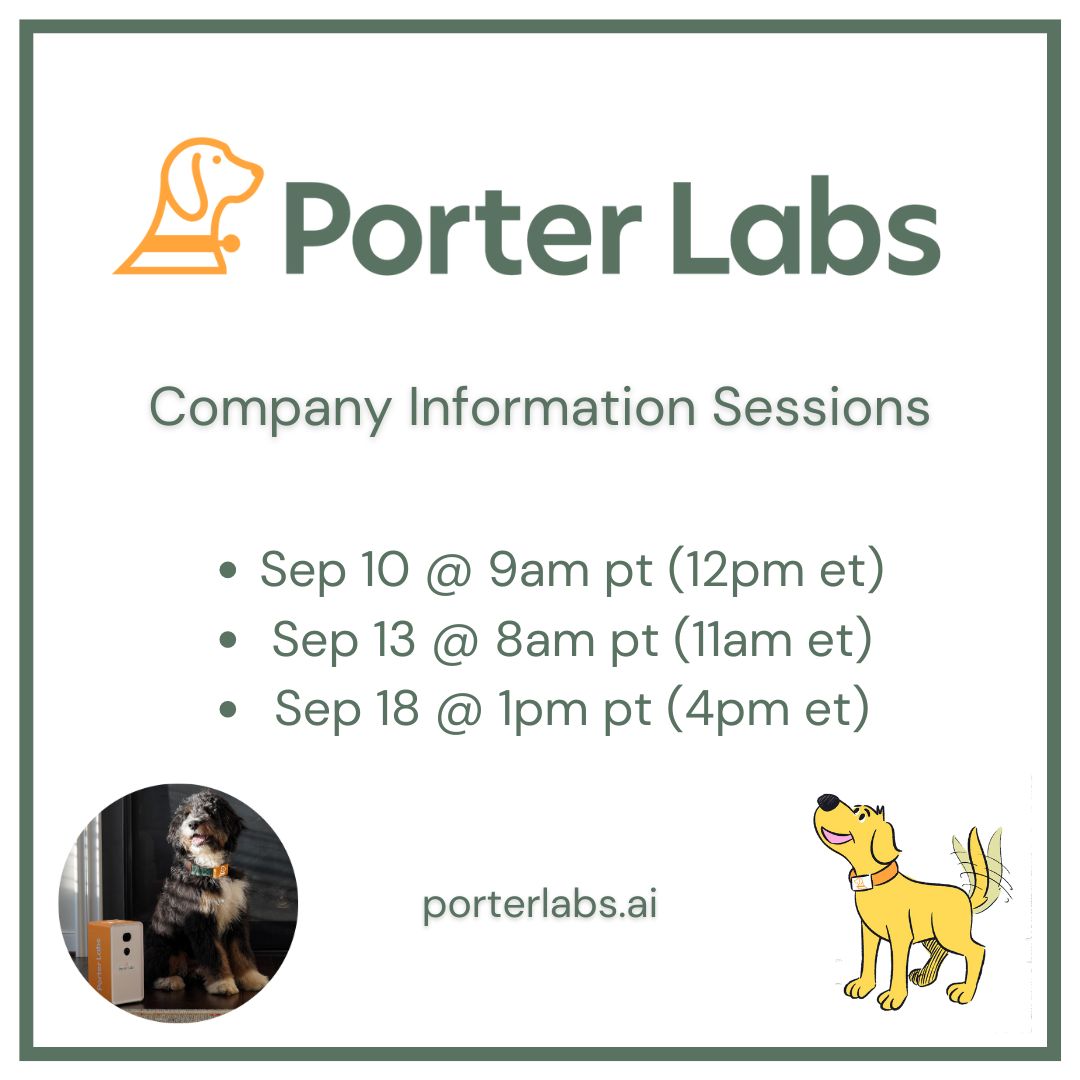Animal shelters are facing a growing post-pandemic challenge. After decades of previously decreasing intake and increasing adoption, shelter intake of both dogs and cats is on the rise. Adoptions have also slowed from their early pandemic increase, placing a significant strain on resources and staff. Increasing adoption success is an important long-range goal we have here at Porter Labs.
Let’s explore why shelters are experiencing these sudden new challenges and look at possible solutions, like manageable daily in-shelter dog training, that have the potential to increase dog adoption and ensure a smoother, permanent transition of dogs into their new homes.
The State of Dog Sheltering in 2024
Animal shelters experienced a surprising lift at the beginning of the pandemic in 2020, as the housebound public rose to the call to foster and adopt animals from sheltering facilities shut down by COVID-19. During March 2020 to May 2021, 1 in 5 respondents to an ASPCA survey reported they had adopted a pet, and were committed to keeping them.
Economic pressures appear to have stalled that trend. A 2023 Q3 report from Shelter Animals Count showed that dog adoptions were down 1.2 percent from 2022, and January-September 2023 also saw a 2.5% increase in dog intake. Non-live outcomes (including shelter euthanasia and deaths in care) for dogs also increased, “up 31% from 2022 and up 85% from 2021.”
How have economic and social trends impacted owner surrender and shelter intake?
There are a wide range of reasons why people surrender their pet to an animal shelter. The top four, in the experience of the Massachusetts SPCA (MSPCA), are time, money, behavior, and housing. It’s increasingly expensive to care for a dog in a home or at a shelter.
The rising costs associated with pet ownership, including food, veterinary care, grooming, and potential emergencies, are a significant influence upon people who want to provide quality care for a pet. A September 2022 American Pet Product Association survey reported that 35% of pet owners cited the expense of having pets as a cause of stress, with half expressing that they might have to give them up due to rising costs of living.
- Routine and emergency veterinary care costs are increasing – nearly 11% from July 2022 to July 2023. The average cost of a neuter package for a dog over six months old is $461, and emergency health care can run far higher, with average costs for cancer at $4,100, foreign object ingestion $3500, and a broken bone $2,700.
- According to PetFood Industry pet food costs are nearly 24% higher than they were in January 2021.
These rising costs not only can cause people to put off adoption, decide not to replace a previous pet, or even relinquish their pets. These costs also impact animal shelters directly, as shelters must provide food and veterinary care for the animals they house.
Younger generations are on the move and affordable housing is harder to find
Gen Z and millennials are experiencing unprecedented mobility both in jobs and living quarters. Uncertainty over where and how often they might move in the future can cause people to hesitate to adopt a pet. As an example of the mobility of younger generations, in the UK, the flatshare site, SpareRoom reported that “25% of Gen Z and millennials have moved home 10 or more times since they left their family house. A further 25% expect to move at least another five times before they find their ‘forever’ home.”
Rent and the cost of purchasing and maintaining a home in the US are increasing. In the last decade, rent inflation has outpaced currency inflation by 40.7% Many pet-friendly apartments also require a pet fee. According to research by the National Association of Realtors (NAR), the average annual pet fee for their clients who purchased a home within a co-op was $300. The average for renters was $400.
Landlords may also set breed or size limits on dogs, and apartment dwellers are also expected to train their dogs so that they don’t cause damage or disturb their neighbors with barking.
So, while being an apartment dweller certainly isn’t a total roadblock to pet ownership – especially to a determined dog lover – it could impact if and when a person chooses to adopt and the breed and size of the dog they choose.
Current and potential pet parents face apprehension about the future
Adopting a dog is a long-term commitment. Uncertainties about future responsibilities and the fear of not having the time, money, or stable home to meet the dog’s needs throughout its lifespan may cause potential adopters to postpone or forgo dog adoption.
When people have a perception that the economy is uncertain, they keep possible future lifestyle changes in mind, like losing or changing jobs, moving back in with parents, or moving to another city. These transition worries can create hesitation about the ability to accommodate a pet’s needs within the evolving circumstances, leading to a delay in adoption.
Changing attitudes toward canine care
Half of US pet owners say they consider their pet a member of their family, and nearly half report their dog sleeps in their bed! Becoming a “pet parent” is considered a greater commitment now, and an increasing number of people want to be ready to care properly for a pet.
More and more, our society has come to believe that adopting a dog requires time for training, exercise, grooming, and overall companionship. The fear of not being able to provide sufficient time and attention to a pet may lead individuals to postpone or avoid adoption.
And when misfortune strikes, people turn to shelters as a humane option for their pet. While it may seem counterintuitive for a person to surrender a canine ‘family member’ to a shelter, many animal shelters have exponentially higher adoption rates and lower euthanasia rates than in past decades, and the public increasingly trusts that a shelter will find their beloved pet a new home. If the owner can no longer afford food or veterinary care and no friends or family can take the pet, the animal shelter is often regarded as the next safest option.
What’s Being Done to Meet These Dog Sheltering Challenges?
The animal shelters and human services community have turned to a variety of both new and traditional programs aimed at lowering the number of unwanted pets, heading off pet relinquishment through pet-owner assistance, and making pets more adoptable.
- Animal shelters are rebuilding affordable spay/neuter programs that were interrupted by the pandemic, to prevent the birth of unwanted puppies and kittens.
- Pet professionals are creating or steering people to programs that help pay for catastrophic veterinary bills like Waggle, Red Rover and others.
- Some are providing transport to spay/neuter clinics and veterinary visits. The biggest hurdle to spay/neuter or vet care for some pet owners is physically reaching a veterinarian.
- The Humane Society of the United States (HSUS) has created their Pets For Life model to help local shelters with community outreach.
- Some shelters or community groups will fix fences and build dog houses to keep dogs from straying or provide them with shelter when they have to be outdoors.
- Animal shelters have expanded pet food pantry options and many local human food pantries now include pet food.
- Meal on Wheels has partnered with PetSmart Charities to provide pet meals to their clients.
- Visiting programs like Dogs Playing for Life provide new socialization and training options for shelter dogs and training for staff
- Animal shelters increasingly offer behavioral counseling to pet parents to help resolve behavioral issues that might otherwise result in pet surrender
- Animal shelters are enlisting dog trainers and canine behaviorists to help dogs become more adoptable, and improve retention in the new home.
The Benefits of Dog Training in Animal Shelters
The shelter environment can be stressful for dogs, which can lead to behaviors like jumping, barking, circling, or hiding, hindering their adoption prospects. ‘Behavior’ is one of the top reasons owners give for surrendering their dog to a shelter, so having a well-behaved dog is at the top of the list for many adopters.
Here’s how daily training programs within shelters emerge as powerful tools, not only increasing adoption rates, but ensuring a smoother transition into what will hopefully be their forever home.
- Basic skills: Teaching basic cues and skills like “sit,” “stay,” and “come” helps dogs feel a sense of control and accomplishment. This not only makes them more manageable within the shelter but also showcases their trainability to potential adopters.
- Socialization skills and confidence: Supervised interaction with other dogs and volunteers during training sessions allows dogs to practice appropriate play behavior and build social confidence. This is especially crucial for puppies and young dogs who might otherwise not get the early socialization opportunity they need to learn proper dog etiquette.
- Mental stimulation: Training exercises engage a dog’s mind, combating boredom and preventing destructive behaviors, jumping, or excessive barking that might arise from frustration. Learning tricks or participating in scent work games with treats can significantly reduce stress levels and keep dogs mentally stimulated.
- Creating a great first impression with adopters: A dog that can respond to basic commands and engages in training exercises creates a positive first impression. This can be the tipping point for an adopter on the fence about choosing a particular dog.
- Understanding temperament: Training sessions allow staff to observe how a dog reacts to different stimuli and cues. This helps them gauge a dog’s temperament, their need for additional training, and their best match for a future home. A dog who is quick to learn and full of energy would be a great fit for a person with a super-active lifestyle. A dog who shows signs of fear will need ongoing training to help them become more comfortable with new things.
- Building rapport and a lifelong bond: Training fosters a sense of partnership between dog and owner. Working together to achieve goals strengthens the bond and makes them a team, increasing the likelihood of a happy and lasting relationship with their future owner.
However, no matter how vital, new lifesaving programs like daily dog training usually require a significant level of resources. A traditional training and behavior program takes expert staff, additional time to work with each individual dog, and ongoing training for shelter staff and volunteers. With millions of shelter dogs, there just aren’t enough human trainers available to do all the work. That’s where Porter Labs comes in!
AI Dog Training Tools: A New Option for Shelter Staff
Artificial Intelligence (AI) refers to the development of intelligent machines that can mimic human cognitive functions like learning and problem-solving. Animal overcrowding and limited resources present very real challenges to shelter staff and volunteers. Each shelter dog may receive only a few minutes a day for a walk or playtime. While the dedication of shelter staff is undeniable, reality dictates time constraints. AI training tools can be an innovative solution for this scarcity of time.
Here at Porter Labs, we’re all about providing people who love and care for dogs with groundbreaking options with our PupStation AI-enhanced dog training suite. It can be a potential game-changer for shelters:
- Unlocking personalities: Pupstation in the kennel or playroom can analyze an individual dog’s behavior patterns, helping identify potential anxieties or fears. This valuable data allows for focused training and better matches with suitable adopters, increasing the likelihood of a successful forever home.
- Optimizing training: AI tools can streamline training for shelter staff, freeing up valuable time. This allows them to focus on more complex cases or dedicate more one-on-one time to dogs that require it.
- Building bonds before adoption: Depending on shelter policies, AI tools could potentially allow people to begin basic training remotely from home while they are waiting for their chosen dog to be released for adoption! They could play interactive games remotely while the dog is still at the shelter waiting for spay/neuter. This fosters a bond before adoption, perhaps helping a pending adopter commit more fully to their future family member.
- Seamless transition to the new home: One day these same AI tools will be available for purchase by the new owner (or provided via an innovative donation program) to continue the dog’s training journey in its new home. This allows for a consistent training approach and builds upon the foundation established at the shelter.
An AI approach to in-shelter dog training with PupStation could help ensure that every dog, even in a shelter with limited time and volunteer resources, receives a greater chance to be adopted and to thrive in a new loving home.
Why Porter Labs Is Dedicated to Partnering with Animal Shelters
At Porter Labs, we’re committed to bring our innovative Pup Station AI-powered learning and play platform to animal shelters this year. Pup Station provides a mentally engaging and consistent training routine by teaching simple obedience skills and fun “tricks.” It keeps a dog’s brain and body engaged throughout the day.
The PupStation smart dog collar, feeder, and satellite modules can transform a shelter kennel or visiting room into an immersive play and learning zone. Using machine learning, it can observe and fine-tune its lessons to each individual shelter dog. Dogs can get hours of extra play and learning time, even when staff or volunteers can’t be with them, learning the common cues and skills that potential adopters would expect in a canine family member. They also have the opportunity to become engaged and confident, busting the boredom that often makes smart but bored shelter dogs appear to be either moping and sad or loud and hyper-energetic.
PupStation: Empowering Shelters, Enhancing Dog Adoptions
The tumultuous economic and health environment of the past few years has impacted animal shelters, leading to a rise in pet surrenders and a decrease in adoptions. As shelters face increased pressure, they are meeting the challenge with innovative solutions. But they need help.
The team at Porter Labs is certain that PupStation is one of those solutions. It can help teach and mentally engage dogs while they are in the shelter, ensure their daily well being, increase their potential to be adopted, and make it more likely that newly adopted dogs will remain permanently in their new, loving home.
Follow our shelter partnership journey by subscribing to our email list or signing up as a partner! This story has just begun.




